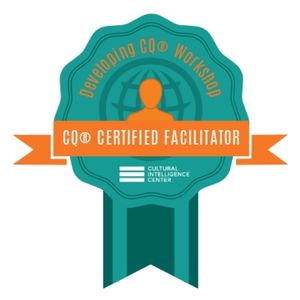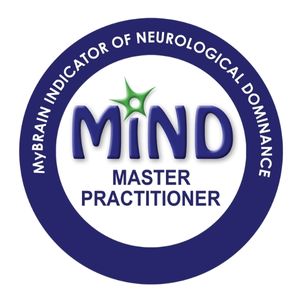Hello everybody. I’m Victoria Rennoldson, Communication and Culture Coach, and welcome to Wednesday Words with me. You can choose to watch this by clicking ‘play’ on the video above, which also has subtitles.
Or, because I know that many of you, just like me, like to listen to podcasts when you’re out and about, you can listen to the audio only version, by clicking below:
Finally, you can also read the blog as well, right here below.
Today we’ll be talking about Confidence Spirals, the two types, when it comes to communication.
Let me ask you a question: Do confident communicators feel confident a hundred percent of the time? Do all those TED speakers, and confident presenters, and people that you look up to and think “Wow, they really know how to land a message, and to get across what they want to say!”, do they always feel confident?
Let me share a bit of a secret with you today, and this is something that we sometimes make assumptions around, and so I really wanted to bust this myth.
People who look confident, feel confident most of the time, however, it certainly doesn’t happen 100% of the time. Just like everybody else, there are good days and there are bad days.
For me personally, there are days when I just don’t feel it, for whatever reason that might be. It might be that it’s the context, perhaps it’s the topic, or the group of people. Maybe it’s something that’s happened earlier in my day that’s impacting on how I’m communicating. So I want to share that, because we often think about confidence when it comes to communication as something to achieve, a tick in the box. Yes, once we get there – tick – we’ve done it, we’ve achieved it, and it just stays there, we don’t have to worry about this anymore.
But of course, that’s just not the reality. Just like any skill, it’s like a muscle, you’re building up the confidence muscle, and the more you practice, the more you focus, of course you’re going to improve. However, there are certainly days when it doesn’t go according to plan, and that is totally alright.
I wanted to share today that there are two kinds of confidence spiral, and I think this is quite helpful for thinking about the idea of communication confidence, and it might help you in situations when things haven’t gone according to plan, but also can help you plan for more positive communication, for making sure that you come across in the way that you want to, when you speak up and share your message.
Let’s talk about the first kind of spiral – this is what I call the Downward Confidence Spiral, and maybe you recognise this: it was an important meeting or presentation, internally or externally, and it hasn’t really happened in the way that you wanted. You weren’t as clear as you wanted to be, or maybe you heard your voice and you started to get stuck in your head, ‘Oh no, I don’t sound like how I want to’.
The more we focus on it, the more it becomes a challenge for us, and in fact sometimes what happens is, we end up replaying the situation in our mind and thinking about it, and cringing maybe even, about what we said or how we said it.
Now clearly, this is not very positive, in fact, it has a very negative impact on us, and if we’re not careful, it can actually impact our future communication. So we need to consider: how do we deal with this? How do we react when we’ve had one of those bad days and we’re in this Downward Confidence Spiral?
Well, I want to share with you today some tips for that situation, which are worth trying to help us break the pattern of the downward spiral, and move on. So, the first thing that we have to do, is accept it. We have to accept that on that day, whatever the reason might have been, wasn’t the most perfect communication, and it is absolutely okay. We have to accept it, rather than fight it.
The second point is that we need to then draw the line that says, ‘Right, I’m going to move on from this, I’m not going to think about it anymore, because it’s not helping me plan for the future, and for me to feel confident.’
The third area, is that we don’t have to be perfect. I know there are certain situations where we’ve prepared well, and we want to come across exactly how we planned, but we all make mistakes in our communication, every single one of us. I’m sure, if you watch a hundred TED talks, you’ll notice that every single person makes a mistake at some point, and that’s just natural. It makes us more human, and it means that people connect to us more. So please do not worry about the mistakes, or sounding perfect. For me, this is not the objective. The objective is to connect through your communication.
Then finally, if you take anything from the situation, think about what you can learn, and by this I mean: what would you do differently next time? There are certain factors that you may not be able to influence, such as, context, people, what happened just before you had that meeting or presentation. But think about if there is anything that you can control? And that’s the important point, what can you actually change, which would make a difference next time to improve your performance.
So that’s the Downward Confidence Spiral, and my advice about how you can break that pattern, and potentially move forward to have a more positive communication experience next time.
Now let’s talk about the other type of confidence spiral, and I call this the Positive Confidence Spiral. As you can imagine, this is a good place to be, and invites us to consider: what can we do to plan for a more positive communication performance? What can we do in advance, to help us come across in the way that we want to, which gives us influence and impact, that creates connection with the people we’re talking to?
To start with think about, what is this piece of communication allowing me to do? What is the overall goal? Let me give an example: if you are preparing for a presentation with a client, and it’s sharing key insights and an action plan, then think about what is the broader objective? That might be about building relationships with a client, making sure that you have a good connection, you keep working together, you deliver great results for them, and they develop more business with you. That’s obviously going to have an important impact on how successful you are, as an individual, as part of the team, and as part of your organisation, with tangible impacts on your career. So that’s important to understand whenever we go into a presentation or a meeting, to think about ‘what’s our overall goal?’.
The second point, is to ask for feedback, and this is important, because, going back to the Negative Confidence Spiral, we sometimes get stuck in our heads, and we hear a self-critical voice, however, this might not be an accurate view of how you’re doing with your communication. So sometimes, I find when I meet clients for the first time, that they have a particular perspective on where they do well, or where they’re not doing well, focusing particularly on the negative points, but they don’t have the objective, accurate view.
There are a couple of ways that you can do this. If you’re in the meeting or the presentation with colleagues you trust, maybe ask somebody for feedback after the meeting, so you can get some outside views. Alternatively, if you don’t have someone you can ask, come and have a chat with me! I quite regularly run evaluation sessions for clients who want to do exactly that: get that view of where are they doing well already, and where they need to focus to develop their skills and the communication strategies to help them along that journey.
The next point is to focus on ‘them’, not you. What do I mean by this? I mean that it’s quite easy in this situation to get focused on how we’re feeling, and what’s going on in our heads. However, if you can get focused on others, then our brain gets distracted, and we can’t split our attention between our self-critical voice and the other people. It makes us more successful because we consider: what do they need? What do you want them to take away from this communication? What action do you need them to take afterwards? This will help you to connect with others, and make sure that your communication is coming across in the way that you want.
Small steps – this is a journey: understand it’s not like a switch, where one day you’re going to wake up, and you’re going to be confident. It takes time, it’s like a muscle, as I mentioned earlier. You build up that muscle through practice, you get feedback, you learn how to adjust your strategies, and improve. If you have one bad day, it’s okay. It’s still part of the journey, you’re going to learn something from that experience, and do something differently next time, so treat it as a small step on the journey.
And the final point, just like with the Negative Confidence Spiral, is be prepared to learn. I encourage you to capture your learnings about what went well and what you would improve next time, even in the positive communication interactions, so you know what you will take forward and use next time.
So let me ask you a question at the end of this Wednesday Words: which Confidence Spiral are you in at the moment?
I hope that if you’re in the negative Confidence Spiral that some of the tips and advice that I shared with you today are helpful for you.
If you’re somebody who is planning forward, then I hope that the Positive Confidence Spiral helps you to think about how you’re going to take this further and really elevate your communication confidence.
I really appreciate you joining me today for Wednesday Words, where we talked about these two types of Confidence Spirals.
If you have any questions on this, or would like some feedback, then please do get in touch with me.
I also have a free e-book Communication Confidence for you to download here.
Thank you so much for joining me today for Wednesday Words, and I look forward to seeing you next time.




